Top 10 Most Expensive Restaurants In The World
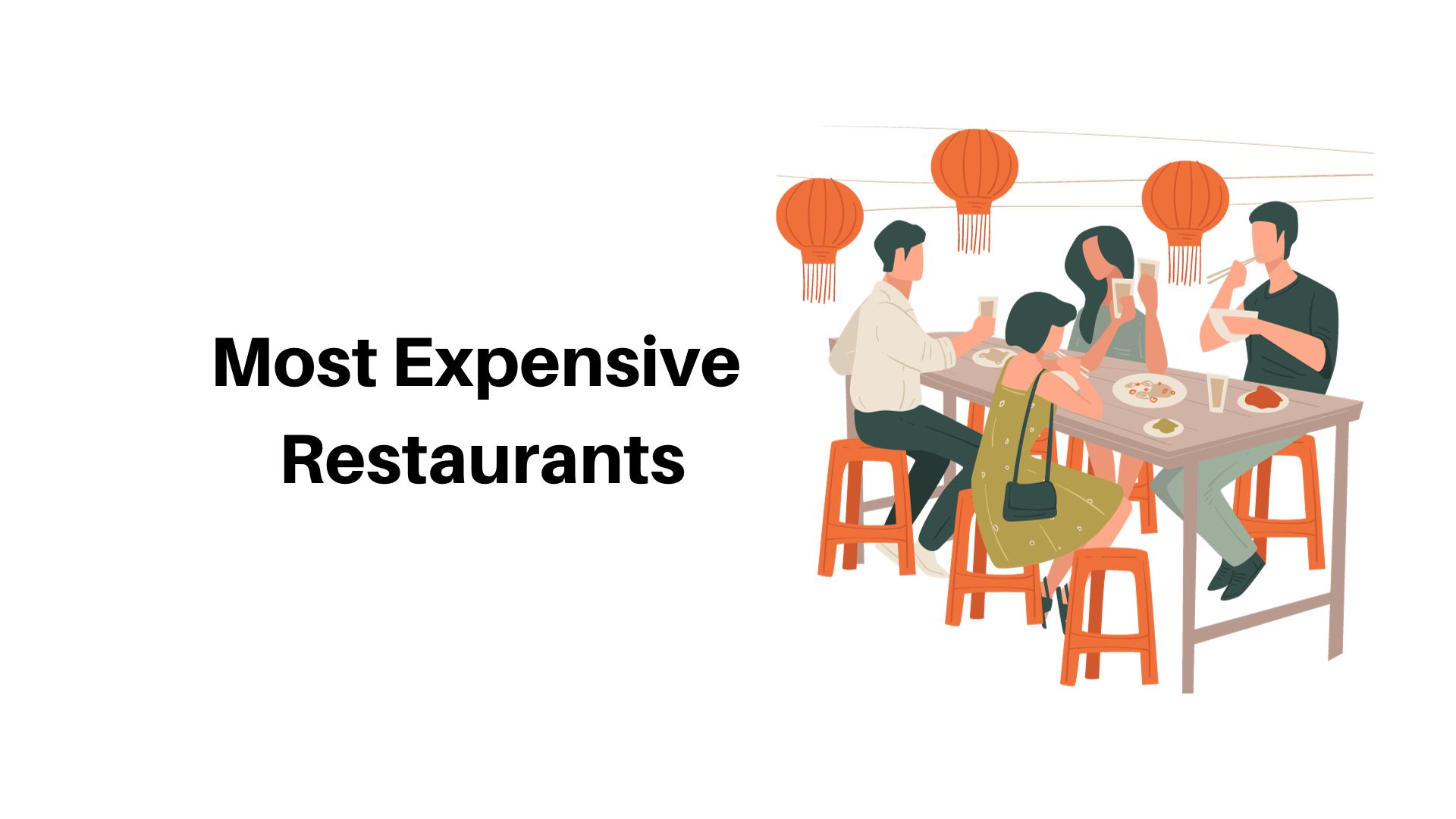
Page Contents
Most Expensive Restaurants: Diners are places where you pay for food and drinks. People go there to hang out, celebrate, or eat outside their homes. They serve many kinds of food, from quick bites to fancy meals. Some diners are small, while others are part of big restaurant chains. Some even deliver food to your home. Cafés add to a town's culture and are important for tourists.
What is a Restaurant?
A restaurant is a place where you can go to eat food that they cook and serve you for a fee. They have many different types of food, and you can pick what you like. Restaurants are good for eating with friends, having a special dinner, or just not cooking at home.
Some are small and family-run, while others are fancy and posh. They give you a menu with different choices like starters, main dishes, and desserts. You tell a waiter or waitress what you want to eat, and they bring it to you. Restaurants make it easy and fun to have a meal outside of your home.
History of Restaurants
Restaurants/Cafes have been around since ancient times. There were Thermopolis in older Rome, which were frail counters that sold hot food as well as drinks to people on the go. Teahouses and cafes were faddish meeting places for both tourists and locals in China.
Nonetheless, the ultramodern concept of a restaurant as we know it today originated in 18th-century France. People used to eat refections at households or auberges but rather pubs, in which they could order a variety of pure dishes and libations. In 1765, a man named Boulanger established an outlet in Paris within which people could address and classify several different of fog, which he dubbed “caffs” well after the French word for “restorative.”
Restaurants became more fashionable over time, and they began to offer a wider variety of dishes. Restaurants started becoming experts in unidentified categories of cookery, similar to French, Italian, or Chinese, in the nineteenth century. As more people began to share a meal out, Restaurants became more formal, with waitstaff, tablecloths, and other courtesys.
The most famous restaurant in the United States is Delmonico's in New York City, which also opened in 1827. Delmonico was recognized for its fine dining and upscale environment, and it established the standard for cafes in the United States.
Restaurants maintained their development and change throughout the twentieth century. The rise of scalding meal catenae in the 1950s and 1960s ushered in a new kind of dining experience focused on simplicity and affordability. Nonetheless, many people enjoy dining out at cafes, whether for a quick lunch, an exotic try to impress, or a special event.
At the moment, cafes are an important element of the hospitality sector and contribute to frugality in many countries. They have a variety of dining options, from athleisure to fashionable, and satisfy a wide variety of cuisines. The restaurant's intermediate forms keep on introducing and evolving, from street merchandisers to Michelin-starred Restaurants.
Uses
Restaurants/cafe slave a variety of distinct goals for people, including
- Going out to eat: One of the most obvious applications of cafes is to provide people with a place to eat fresh produce that they may not be capable of cooking themselves. This includes persons who are on the go or a trip, and also those who want to enjoy a night out or a confinement event.
- People congregate in socializing caffs to conjugate verbs with cavaliers, family, and accomplices over disarray or a drink. They can be a great spot for catching up, commemorating a milestone, or spending time with loved ones.
- Meetings for business, Numerous cafes provide a more traditional setting for customary discussions, family meals, or feasts. This can be a simple and highly qualified way to conduct business while also enjoying shambles.
- Entertainment, Some cafes provide entertainment, such as live music or inferences, to enhance the dining experience. This is a fun and enjoyable way to spend a few hours with your cavaliers or relatives.
- Convenience, Caffs provide a convenient way for many people to get through a mess quickly and fluently. This includes fast food restaurants in addition to everyday dining establishments that provide take-out or quittance services.
Cafes serve a variety of goals for people and contribute significantly to the personable, artistic, and remunerative fabric of communities. They allow people to enjoy delicious food, interact with others, and learn about new and interesting cooking techniques.
Types of Restaurants
Countless distinct types of cafes provide a variety of dining options. Previously, a few of the most common strains
- Fast food restaurants – These are typically chain caffs that provide quick and easy refections which may be arranged at a counter or drive-through. Burgers, festivities, and other comfort foods are frequently served.
- Cafés with casual dining – These caffs provide a more relaxed atmosphere than fine dining establishments, with kitchen counter kindness as well as a different menu. They quite often have a family-friendly aesthetic and they might be capable of accommodating large groups.
- Fine dining establishments – These upscale cafes provide a high-end dining experience, with an emphasis on quality ingredients, donations, and service. They often enforce a dress code and accept reservations.
- Cultural cafes – These restaurants specialize in cuisine from a specific region or country, such as Italian, Mexican, or Japanese. They may provide more genuine expertise than catena caffs as well as a great means of experiencing new smells.
- Gourmet restaurants – These cafes provide a tone-slave headband where guests can select from a wide range of foods on display. They frequently have a large selection of foods which may prove a good addition for groups with distinct tastes.
- Cafes – These cafes typically provide more casual fine dining, with a focus on coffee, desserts, and light reflections such as hamburgers or salads. They may have a cozy atmosphere and be a trendy spot for socialization or working at all times.
- Swaps of food – These mobile cafes serve a variety of cuisines and are frequently rigged up at county fairs, events, or major city pedestrian areas. They provide a distinct and easily accessible dining experience.
The kind of restaurant a person selects is determined by their preferences, cost estimates, and the occasion. There's a restaurant to suit each taste and need, whether it's for a quick sting on the go or a special late evening out.
Features
Caffs can vary greatly in their tenure as president because of their qualities and civilities, but there are currently a few other garden-variety features that many caffs may possess.
- Menu: Every restaurant will feature a menu that outlines the dishes and beverages that they serve. The menu may be printed, software, or demonstrated on a board, and it may include dish descriptions, prices, and prints.
- Dining room: Most cafes will have a designated dining area where customers can linger over their refreshments. The dining area could be divided into sections or have distinct seating options like cells, and tables, but rather bar seating.
- Every restaurant will feature a restaurant where food is laid out, distorted, and plated. The kitchen may be visible to guests or hidden behind unrestricted hatches.
- Service: Attendees may be slaved by restaurant staff who process their requests, utilize their meals and refreshments, and address remuneration, depending on the type of restaurant. Some cafes may provide tone-service options such as diners or food exchanges.
- Air: The atmosphere of a restaurant can have a significant impact on one's dining experience. This was related to energy, scenery, music, and overall atmosphere.
- Many cafes are going to have a bar area where consumers can get alcoholic beverages or sit and socialize. The bar may have a separate menu of beverages and small bites.
- Seating is available outside Depending on the location and atmosphere, some cafes may provide outdoor seating accessories such as a yard, pedestrian walkway seating, or a top-floor sundeck.
- Special occasions: Some cafes may host individual events such as music events, trivia happy hours, or wine tastings. These episodes can improve guests' dining knowledge and create a sense of community.
The functions of a restaurant will be determined by the sort of restaurant and the knowledge that it strives to provide for its customers. A decent eatery will provide decent food, totally absorbed altruism, and a welcoming atmosphere regardless of the features.
Benefits of Restaurants
There are several potential benefits to visiting a restaurant, including
- Convenience: Eating out is convenient because you don't have to stress about cooking, sanitizing, or shopping for food. You can simply sit, organize your food, as well as appreciate your clutter.
- Socialization: Cafes are excellent for meeting up with cavaliers or other like-minded individuals and keeping pace with a mess. They provide a welcoming and comfortable environment in which to socialize and spend quality time with cherished bones.
- Wide selection: Caffs provides an extensive variety of cuisines and dishes, allowing you to attempt new and unique foods that you might not be capable of making at home.
- Occasions Unique: Caffs are ideal for commemorating solitary occasions such as anniversaries, anniversaries, and leaves. Many cafes offer special meal plans or wrappers for these occasions, making them even more memorable.
- Professionalism in Service: Caffs employ trained personnel who provide professional service and attend to all of your needs during your mess. This includes cupping your order, slaving your meal, and ganache your dining expertise.
- Many restaurants have a distinct air or environment that can improve your dining experience. This includes elements such as music, lighting, cityscapes, and overall design.
- Saves time: If you're in a hurry or don't have time for cooking, eating out can be a quick and easy way to make a mess.
Cafes provide a convenient, blissful, and friendly means of relishing food and spending time with valued bones.
The Modern Form of Restaurants
Since its inception in the 18th century, the modern figure of a restaurant has evolved significantly. At the moment, cafes are an indispensable fixture in the hospitality sector, with a diverse range of generalities and cuisines catering to a diverse range of preferences and tastes. Then there are some important characteristics of the innovative and modern form of a restaurant.
- Various Cuisines: The cutting-edge restaurant serves a diverse selection of cuisines inspired by the artistic diversity of the world. Clients have a wide range of options in cafes, from traditional dishes to emulsion cooking.
- Specialization: Modern cafes quite often specialize in a specific cuisine or concept, such as ranch-to-table, vegan, or ethnic cuisine. This is eligible for participation in a more in-depth examination of a specific culinary aesthetic or content.
- Dining in a Relaxed Setting: In ultramodern cafes, everyday dining has become a popular trend. This dining style emphasizes a comfortable atmosphere where patrons could perhaps appreciate a portion of good food and refreshments in a cozy setting.
- Integration of Technology: Modern cafes have assimilated technology to improve customer experiences, such as online ordering, mobile banking, and bookings operation complexes.
- Long-Term practices: To reduce their environmental impact, many modern cafes are implementing sustainable practices such as locally sourced ingredients, composting, and energy-efficient equipment.
- Participation in the Community: Modern cafe shops are becoming less engrossed in their authentic communities, championing local growers, creatives, and charities. This involvement aids in the formation of a devout clientele and contributes significantly to the advancement of high-pitched and various communities.
- Design and decoration: Modern cafes place a strong emphasis on design and breathtaking views, creating unique and visually stunning environments that elevate the dining experience.
The modern eatery is indeed a booming and interactive assiduity that keeps evolving and introducing new concepts. Caffs are an average national part of the artistic and gourmet geography of the twenty-first century, with a focus on different cookery, differentiation, fine dining, information architecture, legitimate methods, community involvement, and design.
Customer’s Requirements
When this comes to dining out, every customer has a unique set of circumstances. Nonetheless, some of the common conditions that customers expect from a restaurant include
- Food of High Quality: The food's overall quality ranks among the most important factors for guests. Guests expect food that is fresh, delicious, and well-prepared to meet their needs and conditions.
- Hygiene and cleanliness: Guests expect caffs to maintain a high level of sanitation and hygiene. Hygienic dishes, tables, bottoms, but also restrooms are all part of this.
- Excellent Service: Good service is essential for guests because it makes up the whole food experience. Guests expect warm and hospitable staff who are knowledgeable about the menu and capable of making recommendations and responding to their needs.
- The atmosphere and the air: When selecting a restaurant at a restaurant, customers expect a friendly atmosphere and atmosphere. This includes comfortable seating, adequate lighting, and appropriate music to enhance the dining experience.
Guests expect better value with their plutocrats, which includes analytic costs, plentiful dooms, and high-quality food and service.
When dining at a restaurant, guests expect convenience, which includes easy-to-find locations, ample parking, and open hours.
- Menu: Varieties Guests anticipate a wide range of menu supplements, including submissive and gluten-free options. They also anticipate that the menu will be regularly updated with substitute dishes.
- Business Speed: Consumer expects prompt and effective assistance, especially during busy times. They also anticipate that their food will be slaved quickly.
Just before dining at a restaurant, guests experience a variety of settings. Some of the common prospects that guests have when dining at a restaurant are delicious food, impeccable hygiene, good generosity of spirit, air and ambiance, value for billionaire, luxe, quality food, and speed of service.
Important Restaurants Statistics
Then there are some facts and figures on cafes from various countries.
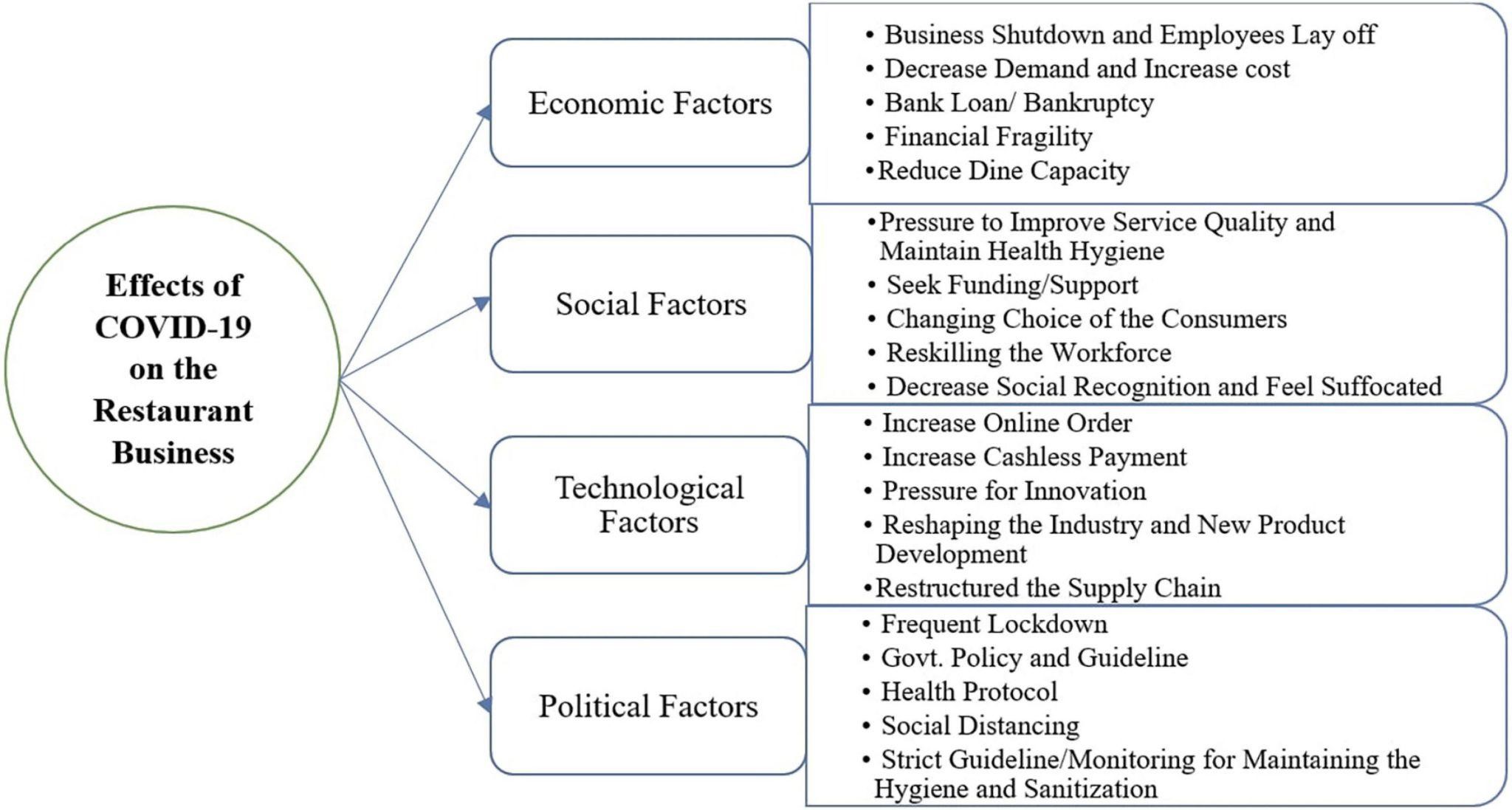
- According to the National Restaurant Association, the restaurant industry in the United States generates approximately $899 billion in sales annually, employs 15.6 million people, and is expected to add 1.6 million jobs by 2030.
- According to the Nielsen Company, there was over a million small shops in the U.S. in 2021.
- According to the National Restaurant Association, 74% of consumers enjoy going to cafes, and 57% of adults enjoy trying new cafes.
- According to the USDA, Americans spent 52% of their food budget in 2019 on eating out at cafes and other food courtesy places.
- According to Comscore, pizza is the most popular restaurant meal in The US, followed by fast food and funk.
- According to the National Restaurant Association, the average American visits a restaurant 4.5 times per week, and 58% of consumers order takeout or leave at least once a week.
- In line with the coequal boom, the restaurant industry will be worth $1.2 trillion by 2030.
- In a recent Toast study, 68% of diners in The US use their smartphone bias to locate restaurants, book a table, and view menus.
- According to the findings of a Technomic poll, 46% of consumers are willing to compensate more for a restaurant mess if the restaurant adheres to safe and environmentally friendly practices.
Top 10 Most Expensive Restaurants In The World
- Sublimotion Ibiza, SPAIN – (Worth $2,000 per head)
- Per Se New York, USA – (Worth $685 per head)
- Masa New York, USA – (Worth $595 per head)
- De L'hotel De Ville Cresseir, SWITZERLAND – (Worth $415 per head)
- Maison Pic Drome, FRANCE – (Worth $445 per head)
- Aragawa, JAPAN – (Worth $370 per head)
- Kitcho Kyoto, JAPAN – (Worth $359 per head)
- Alain Ducasse London, UK – (Worth $343 per head)
- Ithaa Undersea, MALDIVES – (Worth $320 per head)
- Schloss Schavenstein, SWITZERLAND – (Worth $259 per head)
#1. Sublimotion Ibiza, SPAIN – (Worth $2,000 per head)
Sublimotion is the most valuable restaurant in the world. Paco Roncero, a Michelin two-star chef, runs the restaurant on the Spanish island of Ibiza. This restaurant is only open for a few months during the Spanish summer, and getting a reservation can be difficult at times.
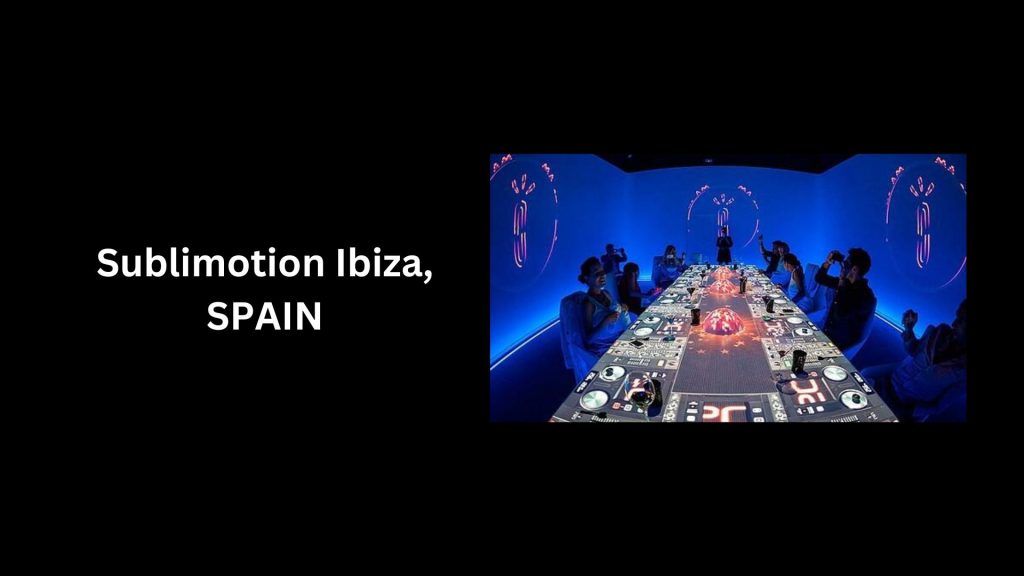
As previously stated, these coffee shops provide much more than just food, which makes them valuable. Your mess reservations include amusement, luxury experience, and any other lovely gestures you can think of.
They have a team of about 25 specialists who will present your 20-course tasting menu one by one even during your scheduled reservations. Furthermore, they create an atmosphere that creates excellent fine dining while savoring the angelic taste of their food.
They won the Glamorous Creation Food and Beverages Award in 2014. It was a great way to advance their goal of widening the stylish culinary amusement expertise in humankind.
#2. Per Se New York, USA- (Worth $685 per head)
Per Se is situated in the state of New York, USA. It's Thomas Keller's second three-star Michelin restaurant, and it's identified for its exceptional generosity to its guests.
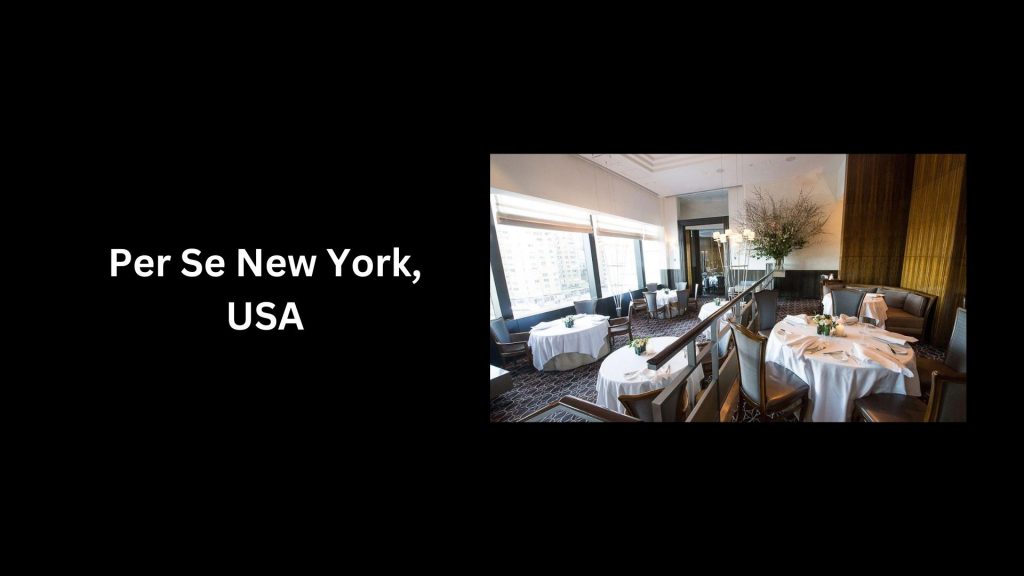
Its nine-course drill navigation bar focuses heavily on French and American cuisine, as it is the most fashionable as its guests' choice. It also provides a total of three enduring menu options, including Submissive options.
The Per Se Restaurant, which has up to 19 tables and views of Columbus Circle and Central Park, cannot be left out of the list of the world's most valuable cafes.
#3. Masa New York, USA, (Worth $595 per head)
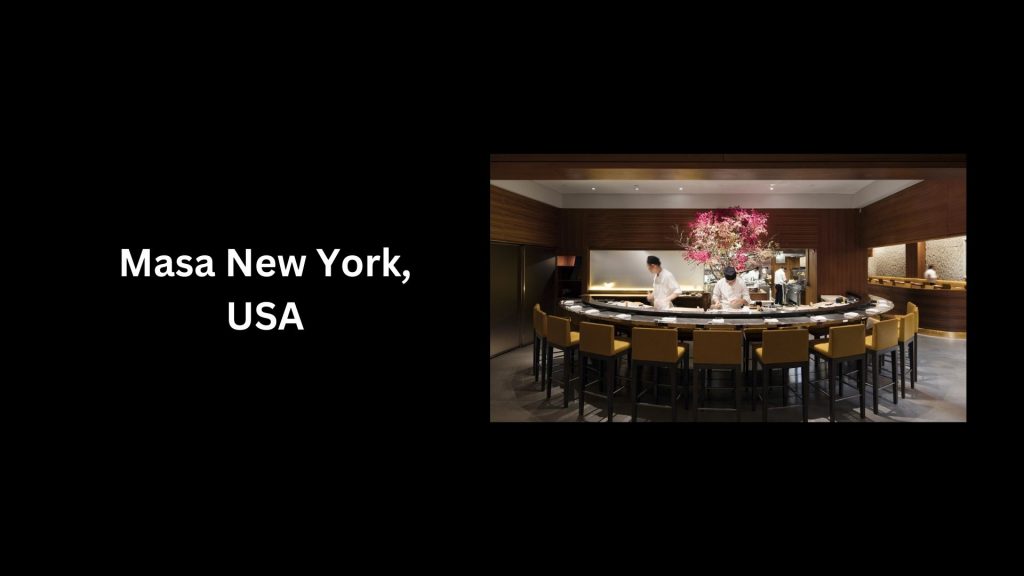
This restaurant is situated in New York, the United States, but it is one of the most expensive in the world, with reservations costing up to $595 per person. It's also well-known for its simplicity. They're further recognized for offering some of the most stylish Japanese food in the world and subjecting their guests to some egregious users to explore.
There is no actual menu available now at Masa Eatery, but the Cookers prepare fresh substances that are available for the day. Although it is always considered overpriced, it is also considered to be worth the price. You choose to achieve and share a meal with notables and, if you're lucky, a dignitary you've been dying to meet.
#4. De L'hotel De Ville Cresseir, SWITZERLAND- (Worth $415 per head)
It's a beneficial move because this city has a three-Michelin-star restaurant where humans can spend time. Head chef Benoit Violier was named Switzerland's Cook of the Year in 2013, less than a year after reopening the restaurant in Crissier.
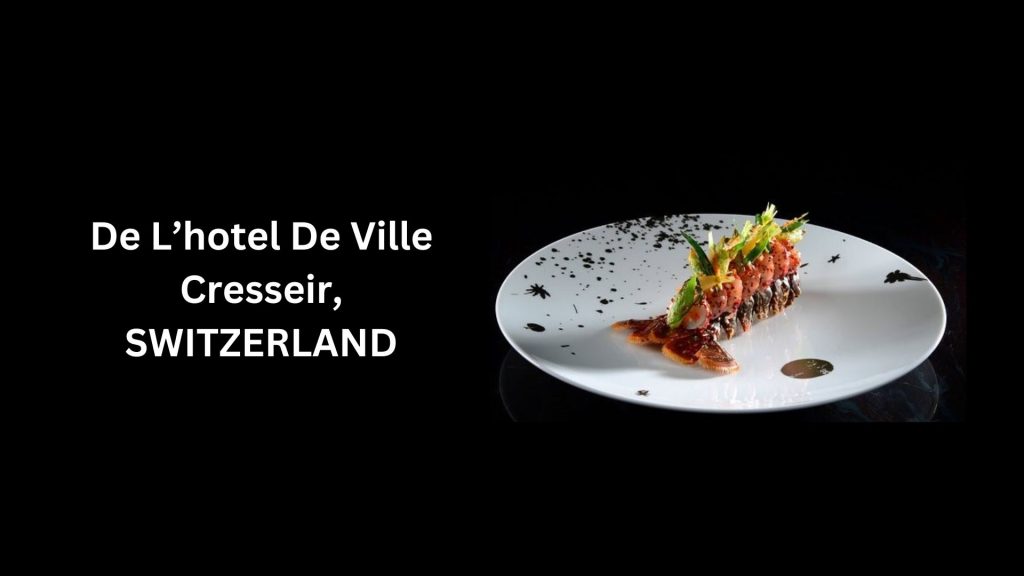
Restaurant de l'Hôtel de Ville, Switzerland's most stylish eatery and one of the most stylish in the world, will make the café a little less than $400. This will provide the client with complete and unrestricted dining expertise of eleven coursework and a broad selection of wines.
Unfortunately, chef Benoit Violier died in 2016 from an apparent self-murder in Jan 2016, just a month after his restaurant was named the world's most fashionable restaurant by GQ.
#5. Maison Pic Drome, FRANCE – (Worth $445 per head)
Sophie Pic is among only six female chefs in the world who operate their restaurant under the auspices of three Michelin stars. Chef Anne-Sophie Pic previously held 5 Michelin stars. In 2009, she and her Switzerland restaurant, Restaurant Anne-Sophie Pic, received a substitute Michelin star. But the Maison Pic in Valence, Drôme, in France's upper region, is her baby.
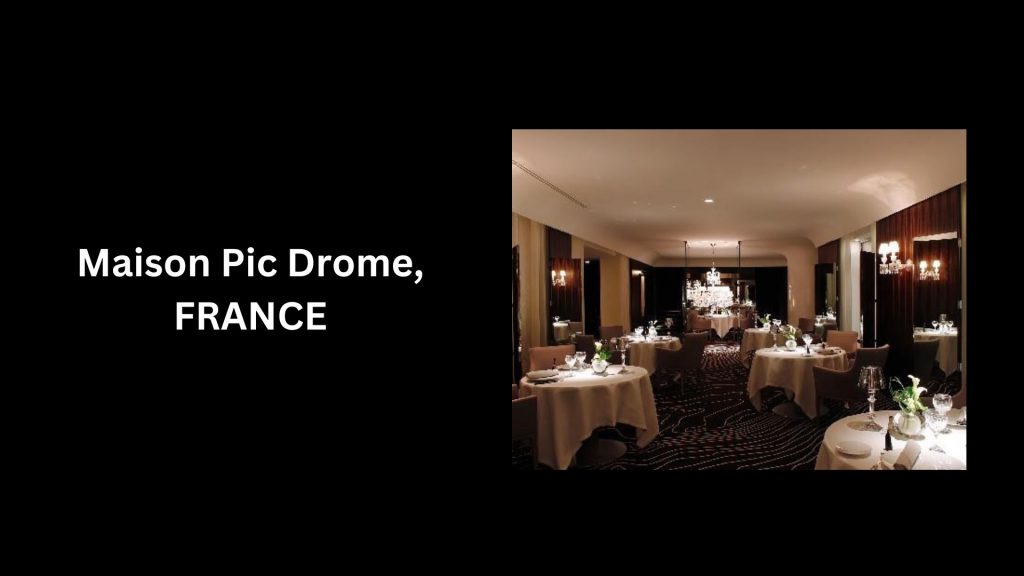
It is, in fact, their family's child. It was founded in 1889 by Anne-Sophie Pic's great-grandparents and has since been passed down to her forefather (Andre Pic) and father Jacques Pic. A regale at Maison Pic costs $445 per person, but it's well worth it.
#6. Aragawa, JAPAN- (Worth $370 per head)
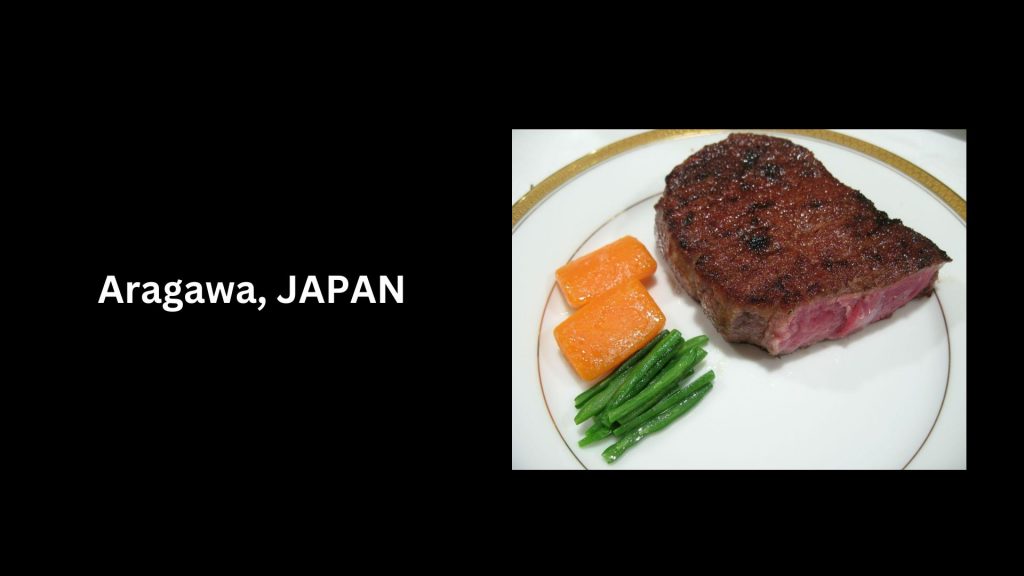
Nonetheless, if you enjoy the finest filet, Aragawa should be on your bucket list. You'd think that the price would be enough to get you a table but think again. A reservation can take several years or even years.
The reason for this is the Wagyu beef (also known as Kobe in the United States), which comes from a single ranch. The Tajima cattle-raising process is lengthy and meticulous, resulting in high costs.
#7. Kitcho Kyoto, JAPAN- (Worth $359 per head)
Arashiyama is a place of residence in one of the most fashionable neighborhoods in Japan, and explicitly one of the most fashionable in the world. From delicate ingredients such as blue gripper and tiger tempura, one can experience superb dining that only Kitcho can provide. Kunio Tokuoka, Teiichi Yuki's nephew, makes Kitcho in Arashiyama.
Kitcho in Kyoto has six cafes, however, the one located in Arashiyama is the best.
If they want to splurge and aren't concerned about the cost, they should order the Cook's Omakase Course.
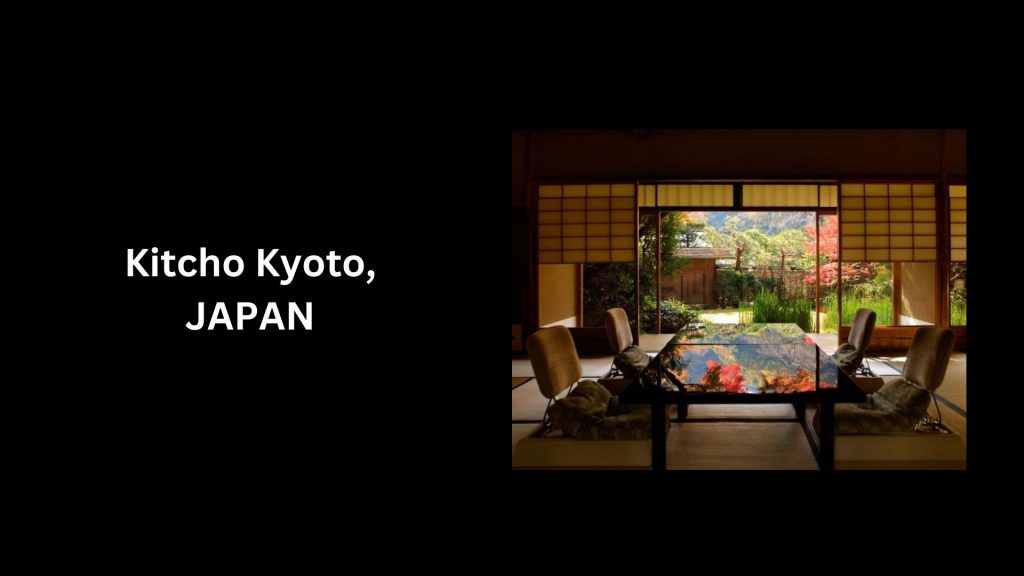
Omakase is a personalized dining experience in which the chef selects fresh and fashionable ingredients and prepares and culinarians them in front of you. Every Wednesday, lunch begins at 1130 a.m. and dinner begins at 500 p.m. Both times are unrestricted.
However, keep this timeframe and the city's name, Arashiyama, in mind if your vacation or culture trip takes guests to Japan and is close to Kyoto.
#8. Alain Ducasse London, UK- (Worth $343 per head)
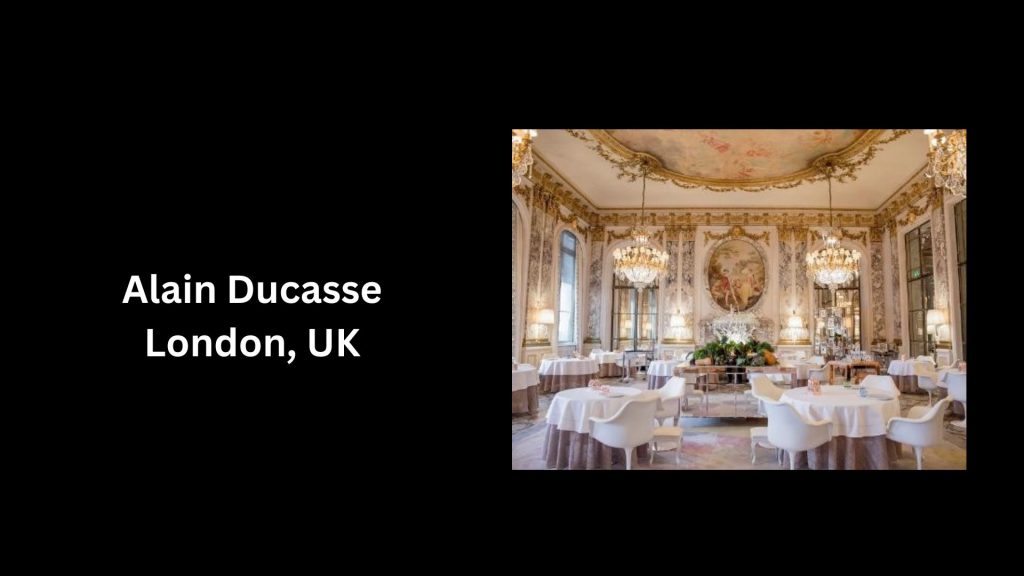
Such a three-Michelin-star restaurant provides one of London's most stylish dining experiences. The café's monolithic room separator, bite-eschewing music, and throwing bedspreads come together to create an astonishingly pleasing space that is as quiet as one might expect.
Jean-Philippe Blondet, Alain Ducasse's institutional cook, is the brains behind the restaurant's cosmopolitan haute cuisine. An a la carte mess at the restaurant will set you back around $285 (£ 245). Alain Ducasse's hand dishes include lobster tails with gourmet rillettes, pan-fried foie gras with rye chuck, and the delectable cirques of pasta and mushroom.
Cherry air marshmallow cocottes, ginger cookies with cream cheese fraîche as well as saffron, and creamy soufflé are among the goodies available. The restaurant also has an extensive wine list that includes labels from some of the world's most prestigious wine directors. Guests can choose from three types of wine to pair with their reflections.
#9. Ithaa Undersea, MALDIVES- (Worth $320 per head)
Ithaa Undersea is the world's first aquatic restaurant and is currently on the list of the ten most valuable cafes in human history. It is situated on the Maldives' Rangali Island. This restaurant provides the experience of eating five meters just under the Indian Ocean, with lambent views of the blue ( including all its marine life and coral auditoriums).
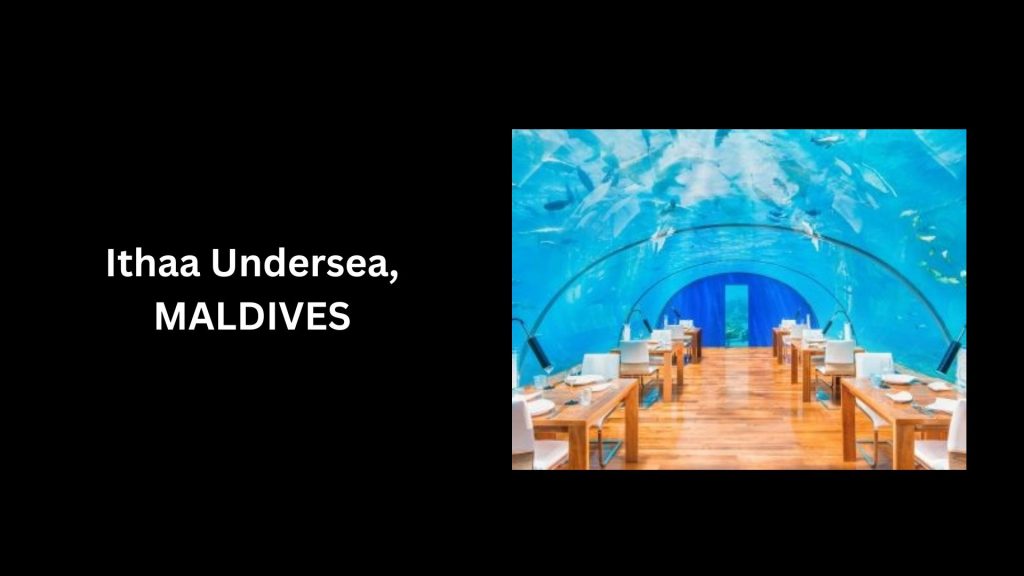
The restaurant can seat up to 14 individuals at one time and offers a variety of beautiful dining guests, regale menus and amalgamations. You can order a four-course lunch or a six-course regale with some of the world's most stylish wines.
Still, Marco Amarone is the man behind this one-of-a-kind and magnificent dining experience.
#10. Schloss Schavenstein, SWITZERLAND- (Worth $259 per head)
Schloss Schauenstein is a diner in Switzerland notable for its epicurean Swiss cuisine. This eating establishment is situated in Fürstenau, a small village in Switzerland's Alps, and allows customers to pick between a three, four, five, or six-course meal.
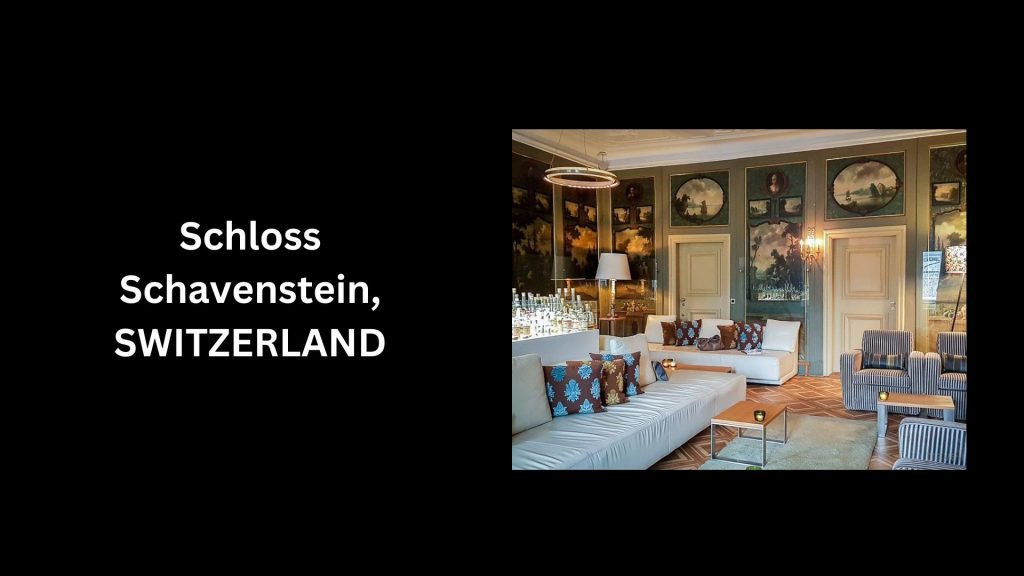
Each one of these accessories has a different price. The three-course mess will cost about $217, while the six-course mess will cost about $271.
Conclusion
Eateries have become an integral part of modern society, offering a diverse range of dining experiences and cuisines. They play an important role in prudence, generating billions of dollars in transactions each year and providing millions of jobs. Hubs are not only food venues but also places to socialize, celebrate, and learn about new cultures.
Nonetheless, the eatery assiduity faces similar complaints, such as rising costs, contestability, shifting customer tastes, and the implications of the COVID-19 epidemic. Caffs must adapt to these hurdles by accepting novel innovations, implementing justifiable practices, providing erratic service, and offering creative and diverse menus.
Cafés also have a responsibility to promote wellness and security by upholding rigorous standards of sanitation and hygiene, adhering to food safety guidelines, and providing hospitable conditions. They can also help to promote sustainability and contribute to community development by obtaining locally, improving efficiency, and participating in an altruistic enterprise.
Cafes are an important part of our daily lives, providing a place to meet new people, learn about new cultures, and eat delicious food. As the assiduity evolves and faces new challenges, the flourishing cafes are the ones that can adapt and incorporate to meet the changing needs of their patrons and the larger community.
FAQ.
It's no great shock that three of the world's most costly restaurants are still in France, with 2 in Paris. Other European countries with tasty dishes along with the world's greatest and most enchanting restaurants include Spain, Italy, and Switzerland.
A delicacy is typically a scarce and costly food item that is extremely desirable, sophisticated, or unusually distinctive within a particular culture.
$25,000 for Grand Velas Tacos. This burrito is the most pricey dish in the universe, with Kobe Beef, Almas Beluga Caviar, and Black Truffle Brie Cheese provided on a gemstone particle corn tortilla.
Food costs have reached all-time highs from around the world. Climate change, conflict, and widespread poverty are making food more challenging to produce and thus more unaffordable.

Aditi is an Industry Analyst at Enterprise Apps Today and specializes in statistical analysis, survey research and content writing services. She currently writes articles related to the "most expensive" category.